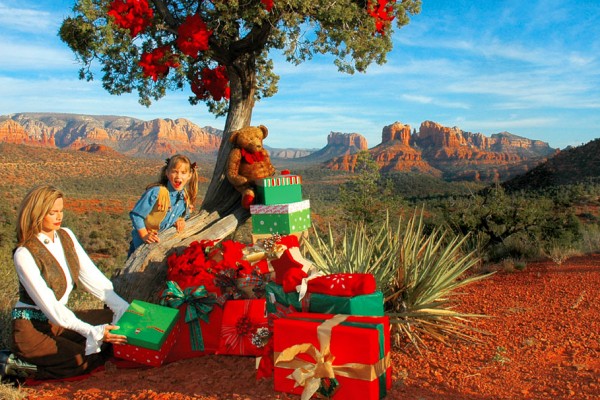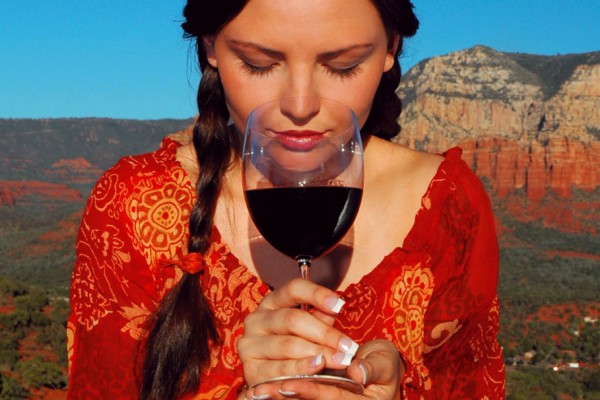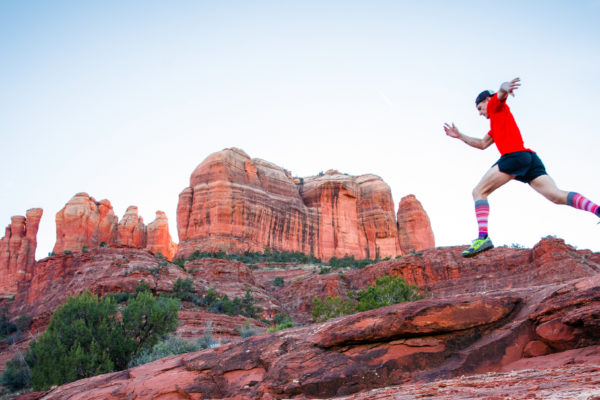Continued (page 2 of 5)
The sisters recount the hours spent learning the craft from their parents and the rigorous inspections by David. “When I would finish a piece I’d pass it to him,” says Dee, referring to her dad who quietly sits, smiling underneath his black Marine Corps cap, as his wife and daughters talk. “I would hesitate to give it to him because he has such an eagle eye – the stones had to be pressed just right. At that age, I didn’t understand why he had to be so perfect. Now I like things tidy. I don’t pass [the finished pieces] to him anymore.”
Alice knew her daughters weren’t thrilled with silversmithing in the beginning but says she offered them this piece of advice: “The heavenly father gave you this talent so you should use it – you are blessed with it. You can’t always apply for a federal job but you will always have this.”
Finding the Inspiration
The family members get ideas for designs in all kinds of ways, including their own dreams. Alice pulls out a piece of natural green turquoise, outlined in black where she plans to cut the stone. “I wanted to make beads,” she explains. “And I dreamed exactly how, so now I’m going to do it.” Adds Clarissa, “Anytime we make something we’ve dreamed, that piece sells like hotcakes.”
Alice also gets inspiration from modern jewelry. She takes out a thick copy of Vogue magazine and points to a large bracelet worn by one of the cover models, similar to a link bracelet she made from sterling silver and sleeping beauty turquoise that sits on her workbench, waiting to be sized. “I look through modern fashion magazines and put the turquoise where the diamonds are,” she says.
While the family considers their jewelry to be traditional, Vernon’s stamp work clearly reflects the pawn jewelry from the 1940s and ’50s. He says his grandfather crafted bows and arrows so the motif regularly shows up in his own work, as do references to the four sacred peaks (the San Francisco peaks in Flagstaff, Blanca Peak and Mt. Hesperus in Colo., and Mt. Taylor in N.M.) and corn stalks (in the Navajo creation story, First Man and First Woman were created from corn, buckskin, and wind).
Vernon, who also makes lifesize metal sculptures and whose uncle is Arizona State Sen. Albert Hale, says he never thought about silversmithing until he watched Alice and David work. “Jewelry didn’t cross my mind at first but then I saw the before and after – the materials they worked with and what they could make from them – and I became very interested,” Vernon says. “I am inspired by older work. I’ll go into the curio shops and look at old pictures. Some ideas come to me in my dreams. And I see what these guys [gestures around the room] start with and then the finished product and it makes me want to finish my own pieces.”
Clarissa, Alice, and Dee all agree the best inspiration comes from the stones. “You’re drawn to certain ones,” says Clarissa. “You pick through stones and get ideas of what you can make. Then you can’t wait to get them home to see what comes out.”
Inside the Process
Each Lister makes his or her own pieces from start to finish – they don’t collaborate (except for a few pieces by Alice and David) and they don’t work in an assembly-line fashion like some Navajo silversmiths. While all use basically the same process, each has his or her own distinctive style: Dee uses lots of color – orange spiny oyster is her current favorite – and many of her shapes resemble flowers, crosses, or clusters. Alice prefers the green-blue stones from Turquoise Mountain and her pieces have a modern twist. David tends to use coral and stamp work. Clarissa and Vernon use a lot of silver as well as stamp and lapidary work in their jewelry.



